Inequality
An inequality is a mathematical statement that compares the values of two expressions using the symbols <, >, ≤ (less than or equal to), or ≥ (greater than or equal to).
Types of Inequalities
There are two main types of inequalities:
- Linear Inequalities: These are inequalities involving linear expressions, such as y < 2x + 3 or 3y ≥ 6x - 4.
- Absolute Value Inequalities: These are inequalities involving absolute value expressions, such as |2x - 5| < 7 or |3y + 2| ≥ 10.
Solving Inequalities
To solve an inequality, follow these general steps:
- Isolate the variable: If the variable is not already isolated, use inverse operations to isolate the variable on one side of the inequality.
- Choose the correct inequality symbol: When solving, be mindful of whether the solution involves strict inequality (<, >) or inclusive inequality (≤, ≥).
- Graph the solution: Represent the solution on a number line or coordinate plane to visualize the values that satisfy the inequality.
Properties of Inequalities
When working with inequalities, it's important to remember the following properties:
- Adding or subtracting a number: When adding or subtracting a number to both sides of an inequality, the inequality sign remains the same.
- Multiplying or dividing by a positive number: When multiplying or dividing both sides of an inequality by a positive number, the inequality sign remains the same.
- Multiplying or dividing by a negative number: When multiplying or dividing both sides of an inequality by a negative number, the inequality sign switches direction.
Study Guide
To master inequalities, it's important to:
- Understand the meaning of inequality symbols and their relation to the number line.
- Be able to solve linear and absolute value inequalities using appropriate methods.
- Apply the properties of inequalities to simplify and solve problems.
- Practice graphing inequalities and interpreting the solutions on a number line or coordinate plane.
Remember to review the properties of inequalities and practice solving various types of inequality problems to build a strong understanding of this topic.
[Inequality] Related Worksheets and Study Guides:
.◂Math Worksheets and Study Guides Seventh Grade. The Pythagorean Theorem
Study Guide The Pythagorean Theorem
The Pythagorean Theorem  Study Guide
Study Guide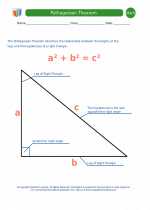 Pythagorean Theorem Definitions
Pythagorean Theorem Definitions  Worksheet/Answer key
Worksheet/Answer key The Pythagorean Theorem
The Pythagorean Theorem  Worksheet/Answer key
Worksheet/Answer key The Pythagorean Theorem
The Pythagorean Theorem  Worksheet/Answer key
Worksheet/Answer key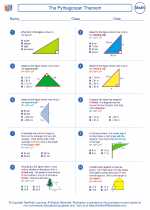 The Pythagorean Theorem
The Pythagorean Theorem  Worksheet/Answer key
Worksheet/Answer key The Pythagorean Theorem
The Pythagorean Theorem  Worksheet/Answer key
Worksheet/Answer key Pythagorean Theorem Distance Problems
Pythagorean Theorem Distance Problems  Worksheet/Answer key
Worksheet/Answer key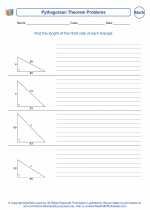 Pythagorean Theorem Problems
Pythagorean Theorem Problems  Worksheet/Answer key
Worksheet/Answer key Pythagorean Theorem Distance Problems
Pythagorean Theorem Distance Problems  Worksheet/Answer key
Worksheet/Answer key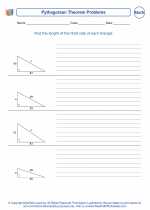 Pythagorean Theorem Problems
Pythagorean Theorem Problems  Worksheet/Answer key
Worksheet/Answer key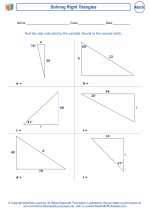 Solving Right Triangles
Solving Right Triangles  Worksheet/Answer key
Worksheet/Answer key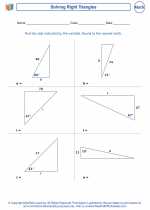 Solving Right Triangles
Solving Right Triangles 

 Study Guide
Study Guide
 Worksheet/Answer key
Worksheet/Answer key
 Worksheet/Answer key
Worksheet/Answer key
 Worksheet/Answer key
Worksheet/Answer key
 Worksheet/Answer key
Worksheet/Answer key
 Worksheet/Answer key
Worksheet/Answer key
 Worksheet/Answer key
Worksheet/Answer key
 Worksheet/Answer key
Worksheet/Answer key
 Worksheet/Answer key
Worksheet/Answer key
 Worksheet/Answer key
Worksheet/Answer key
 Worksheet/Answer key
Worksheet/Answer key

The resources above cover the following skills:
Geometry (NCTM)
Analyze characteristics and properties of two- and three-dimensional geometric shapes and develop mathematical arguments about geometric relationships.
Create and critique inductive and deductive arguments concerning geometric ideas and relationships, such as congruence, similarity, and the Pythagorean relationship.